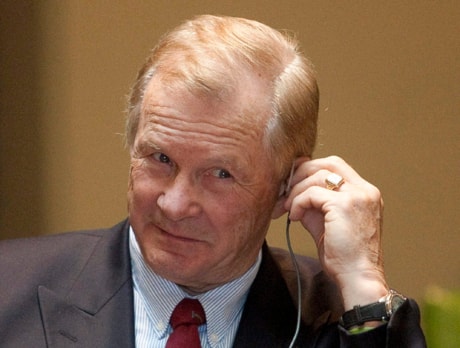OTTAWA — The running gag in Ottawa lately is that the looming end of the Afghan war has left Canada with a pretty little army that’s all dressed up with no place to go.
Those in uniform don’t consider it very funny.
The war transformed the Canadian military, the army in particular, with a lot of new equipment. But more importantly, it has forged a whole generation of soldiers and officers who’ve been tested in battle.
The questions of how, when and where the Canadian military should be employed after combat operations in Kandahar cease next summer is something that MPs and decision-makers have just begun to wrap their heads around.
And if recent hearings and a Senate committee report are any indication, it will be a long, excruciating debate.
The trauma of Afghanistan has just started to set in, and there are those on the policy side who say it will be a very, very long time before another federal government lets the army out to fight the way it has for the last four years in the bloody, arid fields and mountain passes of southwest Asia.
Poll after poll, focus group after focus group have screamed for a return to what Canadians see as their traditional role on the world stage — peacekeeping.
And those are the surveys carried out by the Department of National Defence itself.
Retired major-general Lewis MacKenzie said Ottawa needs to be picky and choosy about the missions it undertakes in the future, regardless of whether its done under a UN or NATO flag.
The experience of being left “alone” in Kandahar by recalcitrant NATO partners is something that should not be forgotten.
“Every time I got into trouble in a UN operation, I always said to myself ‘God, if only NATO was running this, I could do it right and have the resources,”’ MacKenzie told MPs recently.
“Now I’ve discovered that NATO is a bigger debating society than the United Nations.”
The sad reality is, in most of the world’s trouble spots, the traditional Pearsonian form of peacekeeping — known as United Nations Chapter 6 interventions — are few and far between.
More often, international forces end up plopped in between belligerents who are far from finished pummelling each other.
Canadians are much more enthusiastic for missions like the one to Haiti last winter, where the army, navy and air force pulled together to deliver a swift and efficient humanitarian operation in aid of the earthquake-shattered nation.
If last week’s Canada Day celebrations on Parliament Hill were any example, the Conservative government is a willing convert to that kind of benign intervention.
The military’s role in Haiti was showcased in a moving slide show presentation on giant screens in front of the Queen and an estimated 100,000 revellers.
The response to Haiti was a far cry from the dithering that seemed to go on following the 2005 Indonesian tsunami, and the Conservative government has not missed an opportunity pointing out the difference between the responses.
Much was made last spring about the possibility of Canada taking over the UN’s largest peacekeeping missions in the Democratic Republic of Congo and even providing one of the army’s marquee officers, Lt.-Gen. Andrew Leslie, to head the mission.
There are some in the army, however, who recoil in horror at the thought of returning to traditional peacekeeping, although the feel-good aspects of humanitarian relief does strike a chord among rank-and-file soldiers.
The phrase “warrior spirit” gets repeated loudly and often in the military these days, and with a noticeable urgency. Preserving the bloody esprit de corps that has been forged these last few years — and the place it has given soldiers in the nation’s conscience — is becoming a preoccupation.
“We’ve just got figure out how do we want to reposition ourselves for the next period, whatever that is, five-10, 15 years in this post-Afghanistan, post-Olympic world,” said Leslie, who was appointed recently to shape the ideas that will help shepherd the military into its new era.
There are some within National Defence who worry that once Afghanistan is over and the public spotlight dims, the military will be vulnerable to a major slash and burn of its budget.
Leslie said he believes one of the legacies of the war has been that “Canadians have rediscovered their armed forces” and will be paying close attention in the future, regardless of the mission.
“There will obviously be a different focus, a different emphasis,” he said. “I don’t think that sense of national ownership is going to go away.”
The Harper government makes a lot of fuss about the proposed $490 billion it plans to spend on the military as part of its 20-year defence strategy.
Put aside obvious criticism that the Conservatives made promises for future governments that may or may not be fulfilled, and you find defence analysts who fret about the nuts and bolts of the plan.
MacKenzie recently told the House of Commons defence committee the military is too small for what the government often asks it to do and a force of between 85,000 and 100,000 regulars is what Ottawa should aim for to avoid burn-out. The military current has 68,000 full-time members.
He also questioned whether it is buying the right equipment.
The Conservative defence plan makes no mention of troop landing ships — an idea that became a political lightning rod in the 2005-06 election.
